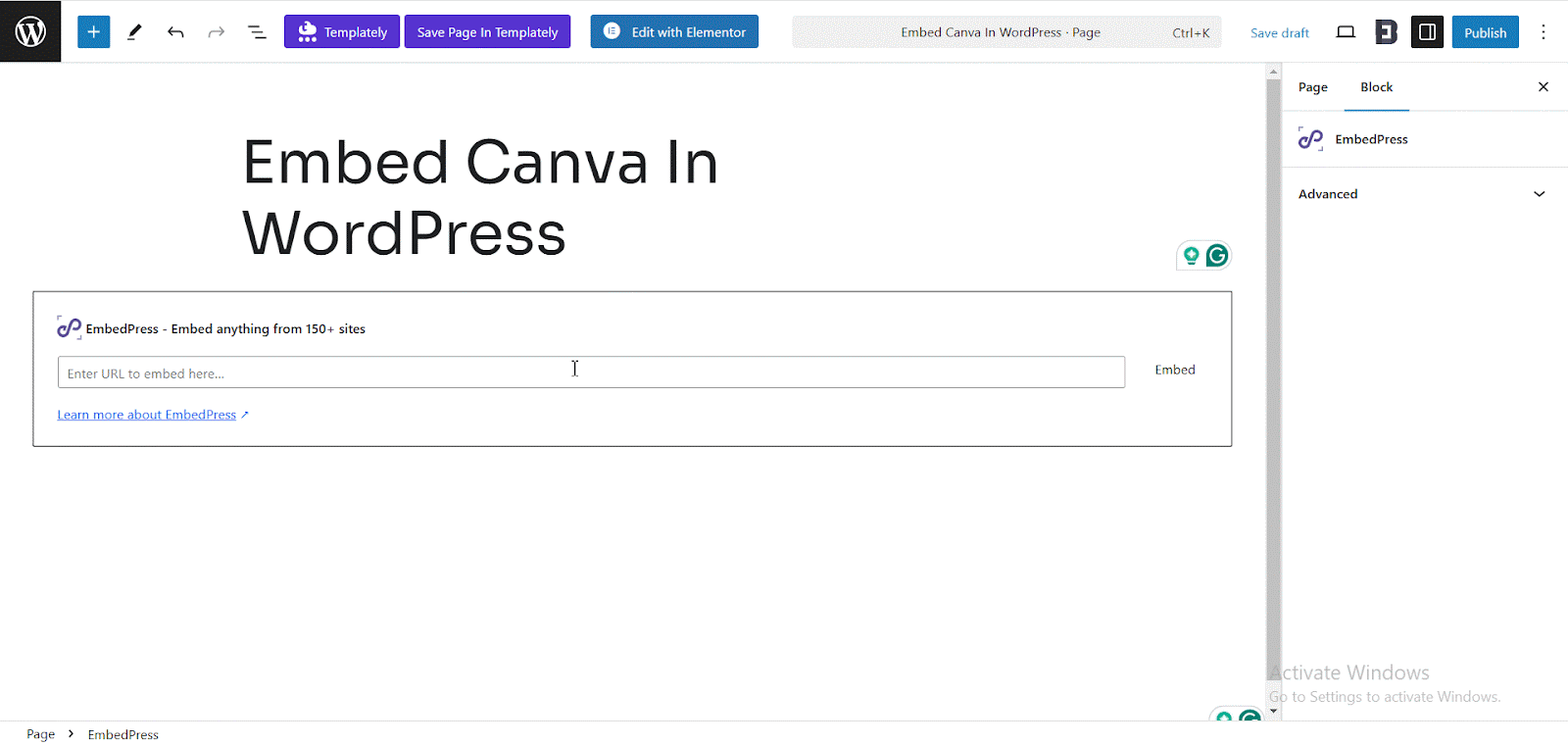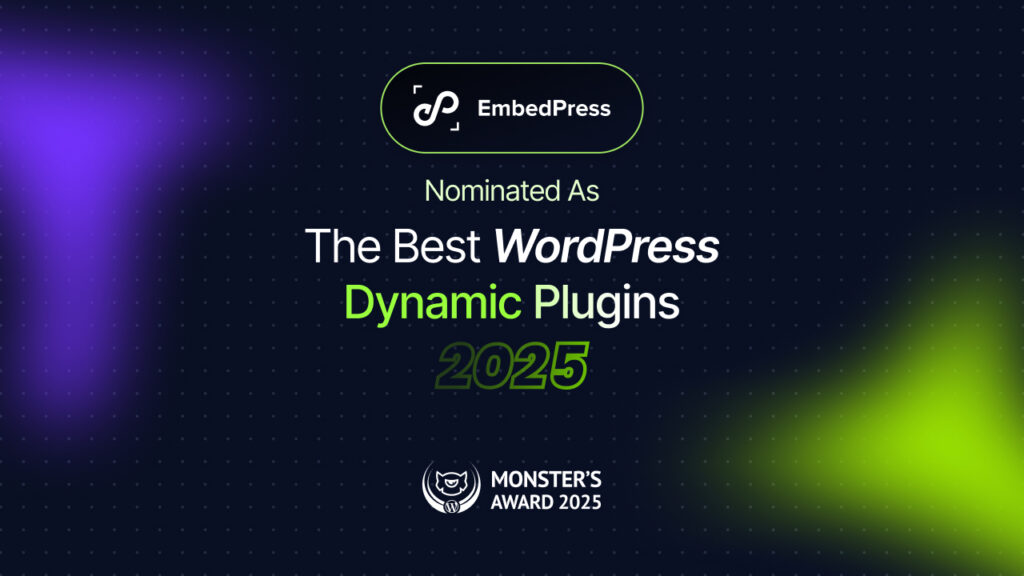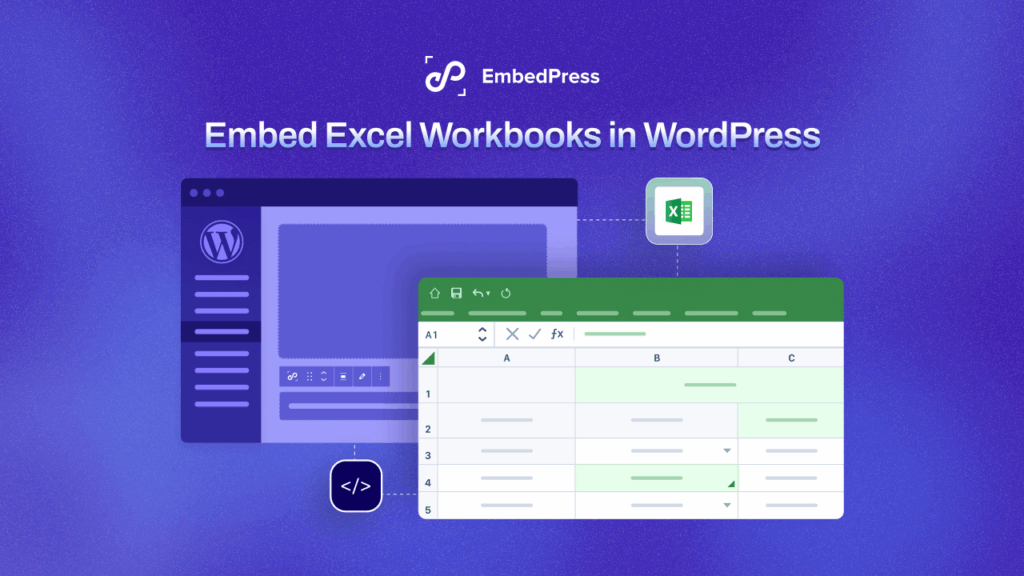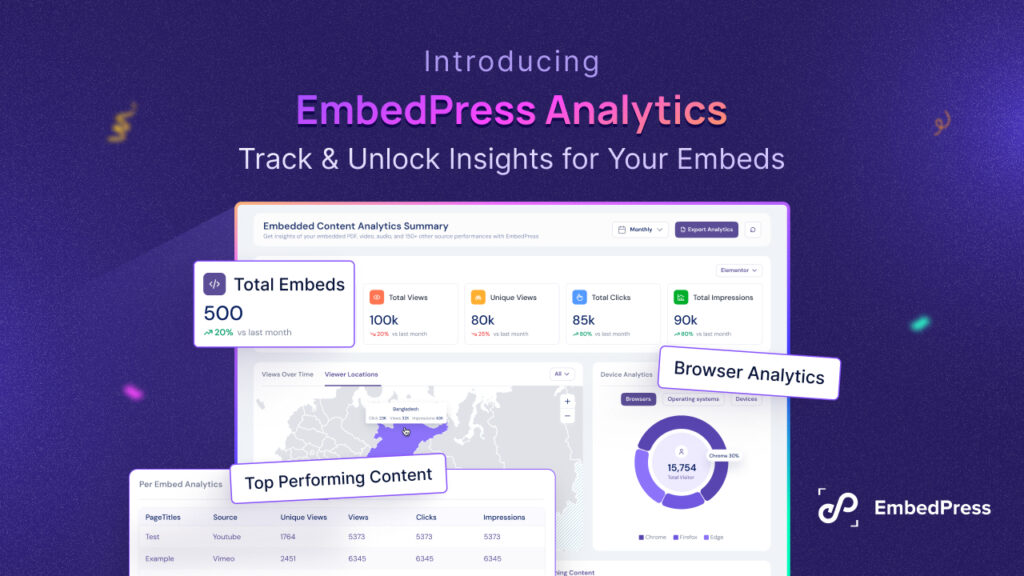Are you looking for a way to increase audience engagement and improve website SEO at the same time? If so, embedded content might be your new secret weapon. By strategically embedding interactive content like videos, social media posts, or maps directly into your webpages, you can offer a satisfying experience for your visitors.

This not only delights visitors and boosts user engagement but can also boost your site’s visibility in search engines. Before you know it, that embedded content could increase website traffic and take your SEO rankings to a new high. Want to learn more and see how these work in action, along with the easiest ways to do it on your website? Stay with us.
💡 What Is Embedded Content & How Does It Benefit Your Website?
Let us start with the basics. Embedded content is any external media or interactive element that you insert into your webpage, so it displays as part of your content. Instead of just linking out and sending visitors away to view a video or post, embedding lets you show that content right on your site.
Think of a YouTube tutorial video playing within your blog post, a Google Map on your contact page, or a live X (Twitter) feed on your sidebar. These rich media items blend seamlessly into your page. The result? Your site becomes more engaging and informative without forcing users to leave your page – a win-win for user experience and your site’s performance. So, what are the benefits of embedded content for better website engagement and SEO? Let’s find the answer below.
Using embedded content on your site is not just a neat trick – it comes with concrete benefits for both user engagement and search optimization. Here is why embedded content can make a big impact:
Keeps Visitors on Your Site Longer
Interesting embedded content (like videos, podcasts, or slide shows) encourages visitors to stick around and explore. For example, adding a relevant video can significantly increase the visiting time on a page. When people stay longer, it signals to search engines that your site offers value, which can improve your SEO ranking.
Improve SEO Signals
Embedded media can indirectly boost your SEO ranking in several ways. As mentioned, longer session durations and lower bounce rates are positive quality signals to search algorithms. Additionally, embedded social content can generate social signals (likes, shares, comments) that hint at your content’s popularity. And here is a bonus – when you embed third-party content, the content owners might notice and even link back to your site as credit.
Improves Audience Engagement

By embedding interactive content directly into your pages, you make the experience more enjoyable and interactive for users. Visitors can watch, listen, play, or navigate content without leaving your site. This hands-on engagement keeps users interested and encourages them to explore more pages and come back for more.
Increases Content Reach & Shares
Embedded content can be a two-way street. When you embed content like a YouTube video or a Twitch live stream, you enrich your site and contribute views and exposure to the original content at the same time. This often becomes a win-win: your site gains engaging material, and the content creator gets an expanded audience.
Saves Bandwidth & Improves Page Load
Another practical benefit of embedding external content is improved performance on your end. When you embed, say, a video from YouTube or a slideshow from another site, that media is served from the external platform’s servers, not yours. This means you are not hosting heavy files, which can keep your page speed steady even as you add rich features. You conserve your own bandwidth – a faster, lighter site for you!
Avoids Copyright Headaches
Worried about using third-party content? Embedding can reduce legal worries. When you embed content via the official share/embed feature of a platform, you are essentially using it with permission and proper credit. So, it always links back to and credits the source. You get great content and the original creator gets attribution – everyone is happy!
Ensures Flawless Display
By embedding content from established platforms, you ensure that it will display correctly for all users. For example, a video hosted on YouTube or Vimeo will use a player that works on any modern browser and device. You do not have to worry about video formats or PDF viewers – the third-party platform handles it.
📋 Embedded Content Types That Help Drive Better Website Engagement

Virtually any type of media or interactive feature can be embedded nowadays. The key is to choose embeds that complement your content and resonate with your audience. Here, we connect the benefits above with concrete examples – these are some of the most popular content types you can embed to make your site more engaging and dynamic:
1. Videos & Audio Media
Videos are arguably the most engaging type of content you can embed. Whether it is a how-to YouTube video, a product demo from Vimeo, or a TikTok clip, video draws attention and keeps people watching. Embedding video content on your pages can dramatically boost engagement – visitors are more likely to press play than to read a wall of text, and they will stay longer to watch.
On the other hand, audio embeds (like a podcast episode or music track) also fall in this category. For example, you might embed a Spotify podcast or a SoundCloud music track to add an audio dimension to your site. These media embeds enrich the user experience and make your content multi-sensory.
2. Social Media Posts & Feeds
Another great source of embeddable content is social media. You can embed individual posts from platforms like Twitter (now X), Instagram, Facebook, LinkedIn, or even a compilation of posts (like an Instagram gallery or a Twitter hashtag feed). This can serve many purposes: for example, showcasing customer testimonials or reviews from Twitter, displaying an Instagram collage of user-generated content, or embedding a Facebook post from your company page for social proof.
Social media embedded content makes your site feel current and connected to real people. They can also encourage visitors to interact – someone might click an embedded tweet to follow you or like/share the post. Embedding social media content can boost engagement on-site and increase website traffic to your social profiles as well. It is also a way to curate relevant conversations or community content onto your website.
3. Interactive Maps & Infographics
If your website deals with locations, data, or any visual information, embedding an interactive map or infographic can help greatly. Consider a contact page with a Google Map embed of your business location – visitors can zoom in/out, get directions, or switch to Street View without leaving your site. This is far more engaging (and useful) than just listing an address.
Similarly, interactive infographics or charts (from platforms like Infogram or Tableau) enable users to hover over data points, filter information, or see animations. This turns static data into an engaging story.
4. Documents and Slide Presentations
Have a lengthy PDF, whitepaper, or presentation you want to share? Instead of forcing a download or linking to Google Drive, you can embed documents directly into your page. Using services like Google Docs/Slides, SlideShare, or PDF embed tools, you can display PDFs, PowerPoint decks, or Word documents in a viewer that users can read through on your site.
This is perfect for things like case studies, menus, brochures, reports, or ebooks. For example, a restaurant might embed its PDF menu on the website so visitors can scroll through it without downloading a file.
5. Live Streams & Real-Time Content
There is nothing quite like live content to capture attention. If your brand or community does live streams (or you want to showcase someone else’s live stream, like a relevant event or webinar), you can embed those streams on your site.
This might include a YouTube Live video, a Twitch stream, or a Facebook Live feed. Embedding live content can make your website a hub for real-time events. For example, a sports blog could embed a live stream of a big game or a commentary show, encouraging fans to stay on the site to watch and chat.
6. Creative Designs & Visual Media
Not all embeds have to be traditional media; you can also embed creations from design tools or other interactive platforms. Canva, a popular design tool, allows you to embed designs onto your website. If you have made a stunning infographic, flyer, or presentation in Canva, why not showcase it directly on your page?
It could be an interactive brochure, a visual timeline, or any creation you would like to display. By embedding the Canva design, visitors can view it in its full glory without a clunky download. This is an excellent way to add custom visual flair to your site, especially for portfolios or blog posts that involve custom graphics.
🎉 Simplifying Embeds with EmbedPress: One Plugin, 150+ Sources

EmbedPress makes it effortless to embed content from over 150 sources into your WordPress site. Instead of juggling separate methods or code for each content type, you can use a single solution to handle everything. EmbedPress is a WordPress plugin designed to streamline embedding – if you can copy a link, you can embed content with this tool.
It supports an enormous variety of content (videos, social posts, maps, documents, audio, even rich media like 3D models) from 150+ platforms out of the box. No more fiddling with manual <iframe> codes or worrying about whether a platform allows embedding; EmbedPress has done the hard work for you.
Beyond its broad support, what makes EmbedPress truly handy is how easy it is to use. You do not need any coding skills to embed content on your site. Once the plugin is installed, it is usually as simple as pasting the URL of the content you want to embed.
For example, if you have a YouTube video or a tweet URL, just drop that link into your WordPress editor, and EmbedPress will automatically convert it into an embedded element. Whether you are using WordPress’s block editor or a website builder like Elementor, you can insert an EmbedPress block/widget, paste your content link, and voila – the content appears beautifully on your page.
✨ Just Copy-Paste! How Easy It Is to Embed Anything with EmbedPress
To illustrate just how user-friendly embedding with EmbedPress is, let us walk through a quick example. Suppose you want to embed a design you made in Canva onto your WordPress page – maybe it is a poster, flyer, or infographic you want to show off in a blog post.
1. Get the Canva Embed Link
In Canva, you would click the Share button on your design, choose the Embed option, and copy the embed link provided. (Canva gives you a special URL or embed code for sharing designs.)

2. Paste into WordPress
Now, go to your WordPress editor. If you are using Gutenberg, simply add an EmbedPress block where you want the design to appear, and paste the Canva URL. The moment you do, you should see your Canva design preview automatically within the editor.

Using Elementor? Just drag the EmbedPress widget into your page layout and paste the Canva link there – you will instantly see the design load up. It is really that simple.
Even if you are on the old Classic Editor, EmbedPress has you covered. Go to the EmbedPress plugin dashboard, paste the Canva link into the shortcode generator, and click “Generate.” EmbedPress will automatically produce a shortcode of that content. Copy the shortcode and paste it into your Classic Editor content area. When you publish the page, the Canva embed will appear in place of the shortcode.
3. Publish and Make It Live
Upon embedding, customize with the options and even use advanced controls like custom players, content protection, custom ads and more. Once done, save or publish your page, and view it on the front-end.
🚀 Maximize Engagement with Perfect Embedded Content
Embedded content offers a powerful solution. Embedding interactive content and media from around the web directly into your site helps maximize your website’s impact. From videos and social feeds that keep people scrolling, to maps and forms that add utility, embedded elements turn a flat page into a vibrant experience. And thanks to tools like EmbedPress, this benefit is no longer reserved for tech experts. Even newbies can embrace embedded content in their web strategy.
If you have found this blog helpful, share your opinion in the comment section and get connected to our Facebook community. You can also subscribe to our blogs for valuable tutorials, guides, knowledge, tips, and the latest WordPress updates.





